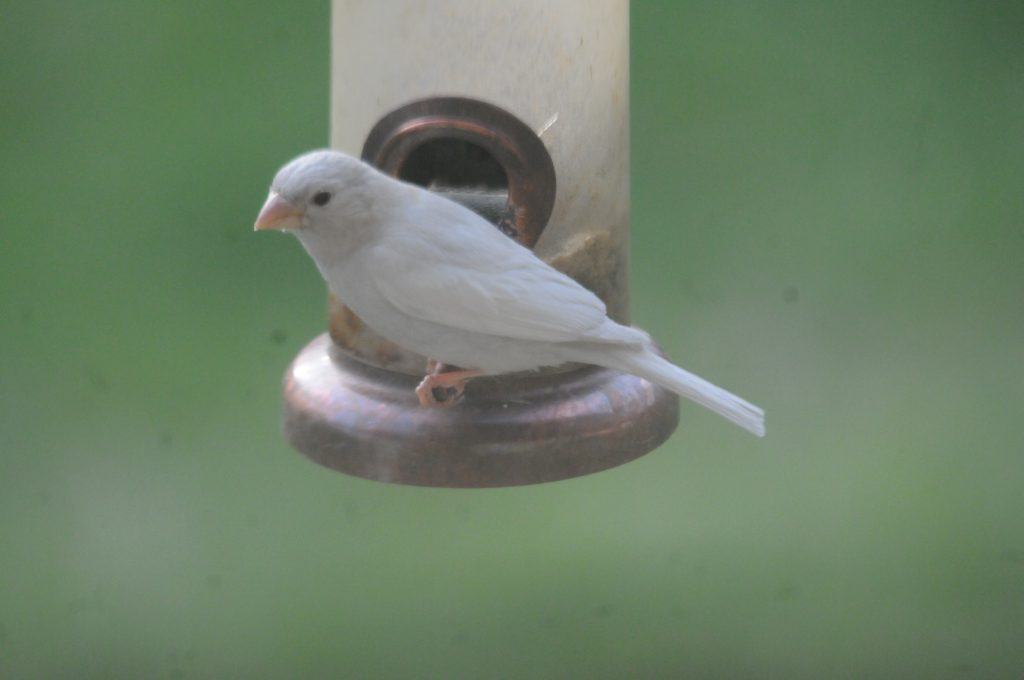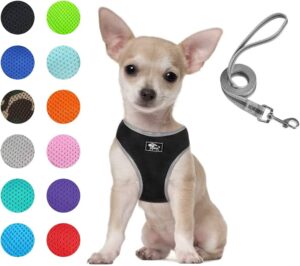Small black pet birds with white beaks are charming and unique. These tiny creatures add a touch of elegance to any home.
They are not just beautiful but also fascinating to watch. Their striking contrast of black feathers and white beaks makes them a delight to bird lovers. Are you curious about these petite wonders? Small black pet birds with white beaks are gaining popularity among pet owners.
They are easy to care for and fit well in small living spaces. These birds can become great companions, bringing joy and life to your surroundings. In this blog, we will explore the different types of small black pet birds with white beaks. We will also discuss their care, behavior, and why they might be the perfect pet for you. Stay tuned to discover more about these delightful feathered friends!
Choosing The Right Bird
Choosing the right small black pet bird with a white beak is crucial. You want a bird that fits your home and lifestyle. This section covers popular breeds and tips for selecting a healthy bird.
Popular Breeds
There are several popular breeds of small black birds with white beaks. Here are a few:
- Java Sparrow: Known for its striking black and white contrast. They are social and interactive birds.
- Black-Capped Chickadee: These are curious and friendly birds. They adapt well to indoor environments.
- Black Phoebe: These birds are active and enjoy flying around. They thrive in open spaces.
Selecting A Healthy Bird
To ensure you choose a healthy bird, follow these tips:
- Observe the bird’s feathers. They should be smooth and shiny.
- Check the bird’s eyes. Clear and bright eyes indicate good health.
- Listen to the bird’s breathing. It should be quiet and regular.
- Look at the bird’s activity level. A healthy bird is alert and active.
Ask the breeder or pet store for health records. A reputable seller will have this information.
Examine the bird’s environment. Clean cages and fresh food suggest good care.
:strip_icc()/popular-small-bird-species-390926-hero-d3d0af7bb6ed4947b0c3c5afb4784456.jpg)
Credit: www.thesprucepets.com
Setting Up The Perfect Habitat
Creating the ideal habitat for your small black pet bird with a white beak is crucial. A well-thought-out environment ensures their happiness and health. Let’s explore the essential steps to set up their habitat.
Cage Size And Type
The cage size matters for your bird’s comfort. A small bird needs space to move and spread its wings. Choose a cage that’s at least 18 inches wide, 18 inches deep, and 24 inches high.
Wire cages are ideal. They provide good ventilation and visibility. Ensure the bar spacing is no more than half an inch. This prevents the bird from getting stuck.
| Bird Type | Cage Size | Bar Spacing |
|---|---|---|
| Small Black Bird | 18″x18″x24″ | 0.5 inches |
Essential Accessories
Stock the cage with the right accessories. These items keep your bird entertained and healthy.
- Perches: Provide multiple perches of different sizes and textures. This keeps their feet healthy.
- Food and Water Dishes: Use sturdy, easy-to-clean dishes. Fresh food and water are vital.
- Bird Toys: Include a variety of toys. They prevent boredom and encourage exercise.
- Cage Liners: Use paper liners. They make cleaning easy and keep the cage hygienic.
By setting up the perfect habitat, your small black pet bird with a white beak will thrive. Happy birds are healthy birds.
Diet And Nutrition
Small black pet birds with white beaks need a balanced diet to stay healthy. Proper nutrition ensures they have enough energy and maintain their bright feathers. A well-rounded diet also helps in their overall well-being and longevity. Here are some details on what these birds should and should not eat.
Recommended Foods
Seeds are a primary food source for these birds. They love sunflower seeds, millet, and canary seeds. Fresh fruits and vegetables are also important. Offer them apples, carrots, and leafy greens. These provide essential vitamins and minerals. Pellets are another good option. They are specially formulated to meet the nutritional needs of these birds.
Foods To Avoid
Avoid giving them chocolate and caffeine. These can be toxic to birds. Also, stay away from salty and sugary foods. Such foods can lead to health issues. Avocado is another food to avoid. It can be harmful and even fatal. Lastly, avoid feeding them onions and garlic. These can cause digestive problems.
Daily Care Routine
Taking care of a small black pet bird with a white beak can be a delightful experience. This bird needs a daily care routine to stay healthy and happy. A good routine ensures the bird’s well-being and creates a strong bond between you and your pet.
Cleaning The Cage
Clean the bird’s cage every day. Remove any old food and droppings. This keeps the cage smelling fresh and prevents bacteria growth. Use a mild soap and water to clean the cage. Rinse well to remove any soap residue. Dry the cage completely before placing the bird back inside.
Providing Fresh Water
Provide fresh water daily. Empty the water dish and rinse it out. Fill it with clean, fresh water. Birds need clean water to stay healthy. Check the water several times a day to ensure it stays clean. Replace it if it looks dirty or has any debris.
Health And Wellness
Maintaining the health and wellness of your small black pet bird with a white beak is essential. A happy, healthy bird leads to a joyful companionship. Understanding common health issues and recognizing signs of a healthy bird can help you care for your feathered friend.
Common Health Issues
Small black pet birds with white beaks are prone to several health issues. Respiratory infections are common. Symptoms include wheezing, coughing, and nasal discharge. Feather plucking is another issue. Birds may pluck feathers due to stress or boredom. Parasites like mites can also affect their health. Watch for excessive scratching or visible pests on their skin.
Signs Of A Healthy Bird
Knowing the signs of a healthy bird helps ensure your pet’s well-being. Bright eyes and shiny feathers indicate good health. A healthy bird is active and alert. Regular eating and drinking are also signs of wellness. Clear breathing and clean nostrils are important. Healthy birds vocalize and show curiosity in their surroundings. Regular check-ups with an avian vet can help maintain their health.
Training And Socialization
Training and socializing a small black pet bird with a white beak can be a rewarding experience. Proper training and socialization ensure that your bird feels secure and confident. Training helps strengthen the bond between you and your bird.
Basic Commands
Start with simple commands. Teach your bird to step up onto your hand. Use a consistent phrase like “step up.” Reward with a treat each time. Repeat until the bird associates the command with the action.
Next, teach your bird to step down. Use the phrase “step down.” Guide your bird gently onto a perch. Offer a treat immediately. Consistency is key. Practice these commands daily.
Interaction With Humans
Socialization is crucial for your bird’s well-being. Spend time with your bird every day. Talk to it softly. Let it get used to your voice. Gradually increase the time spent together.
Introduce your bird to other family members. Ensure interactions are calm and positive. Avoid sudden movements. Encourage gentle handling. Reward your bird with treats for good behavior.
Provide toys and activities to keep your bird engaged. Rotate the toys regularly. This prevents boredom and promotes mental stimulation. A well-socialized bird is happy and healthy.
Entertainment And Enrichment
Small black pet birds with white beaks are curious and playful. Keeping these birds entertained is essential for their well-being. They need activities to stay happy and healthy. This section will guide you through the best ways to keep your feathered friend engaged.
Toys And Activities
Birds love toys. They are a great way to keep your bird busy. Here are some popular options:
- Chew Toys: Birds enjoy chewing. Offer safe and durable toys.
- Swings: Birds like to swing. It helps them exercise.
- Mirrors: Birds are fascinated by their reflection. It keeps them engaged.
- Ladders: Climbing is fun for birds. It also promotes physical activity.
Rotating toys is important. It keeps the bird from getting bored.
Preventing Boredom
Boredom can lead to behavioral issues in birds. Here are ways to prevent it:
- Interactive Play: Spend time playing with your bird daily. It strengthens your bond.
- Foraging Toys: Hide treats in toys. It stimulates the bird’s natural instincts.
- Social Interaction: Birds are social creatures. They need interaction with you or other birds.
- Training Sessions: Teach your bird tricks. It keeps them mentally active.
Birds need a stimulating environment. Use these tips to keep them happy.

Credit: feederwatch.org
Travel And Transport
Traveling with your small black pet bird with a white beak can be fun. It is important to ensure their safety and comfort during the journey. Here are some tips to make the trip smooth for you and your feathered friend.
Safe Travel Tips
Always plan ahead before traveling with your bird. Make sure they are healthy and fit for travel. Visit the vet for a check-up. Ensure your bird has a clean bill of health.
Keep your bird calm during travel. Birds can get stressed easily. Speak to them softly and provide a familiar toy. This helps them feel safe.
Hydration is crucial. Carry a water bottle and a small dish. Offer water regularly to keep your bird hydrated.
Never leave your bird in a parked car. Cars can heat up quickly. This can be dangerous for your bird.
Choosing The Right Carrier
Select a carrier that is sturdy and well-ventilated. The carrier should be large enough for your bird to move comfortably. Yet, it should not be too big. This prevents them from getting tossed around during travel.
Line the carrier with soft bedding. This adds comfort and absorbs waste. Secure the bedding to keep it in place.
Ensure the carrier has secure latches. Birds are clever and can find ways to escape. Double-check the latches before travel.
Place the carrier in a stable position in your vehicle. Avoid areas with direct sunlight. This keeps the temperature inside the carrier comfortable.
Cover the carrier with a light cloth. This reduces stress by limiting visual stimuli. Make sure air can still circulate.

Credit: www.mainepublic.org
Frequently Asked Questions
What Is A Small Black Pet Bird With A White Beak?
A small black pet bird with a white beak is often a Java Sparrow. They are popular pets due to their friendly nature.
How To Care For A Java Sparrow?
To care for a Java Sparrow, provide a spacious cage, fresh water, and a balanced diet. Regularly clean their cage.
What Do Java Sparrows Eat?
Java Sparrows eat a variety of seeds, fruits, and vegetables. A balanced diet ensures their health and well-being.
Are Java Sparrows Friendly Pets?
Yes, Java Sparrows are known for their friendly and social behavior. They can bond well with their owners.
Conclusion
A small black pet bird with a white beak makes a unique companion. Their striking appearance and charming personality delight bird lovers. Easy to care for, they fit well in cozy spaces. These birds also bring joy and life into any home.
Consider adopting one to enrich your daily routine. Their cheerful songs and playful antics will warm your heart. A small black pet bird with a white beak could be the perfect addition to your family. Enjoy the love and beauty they bring each day.





